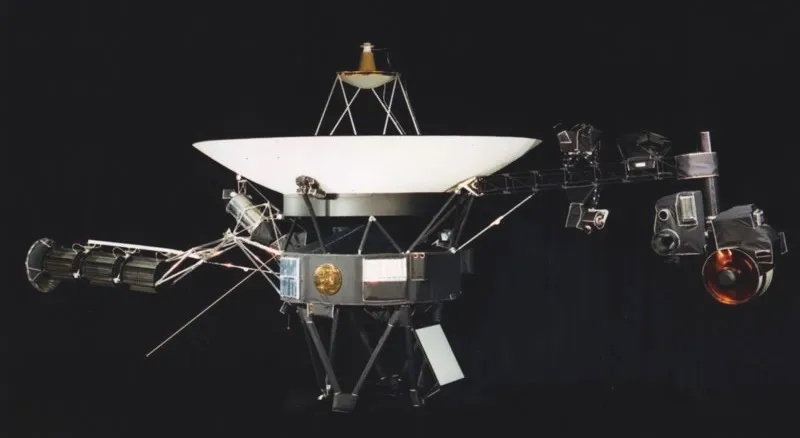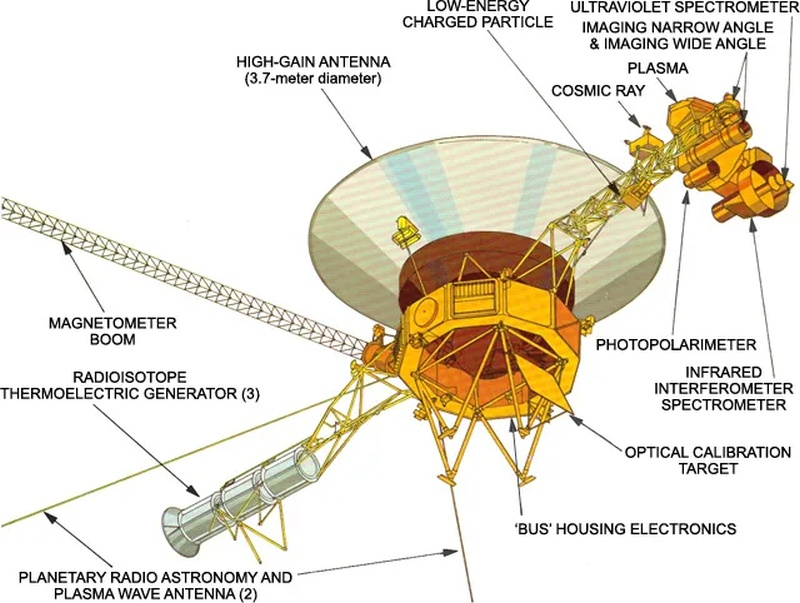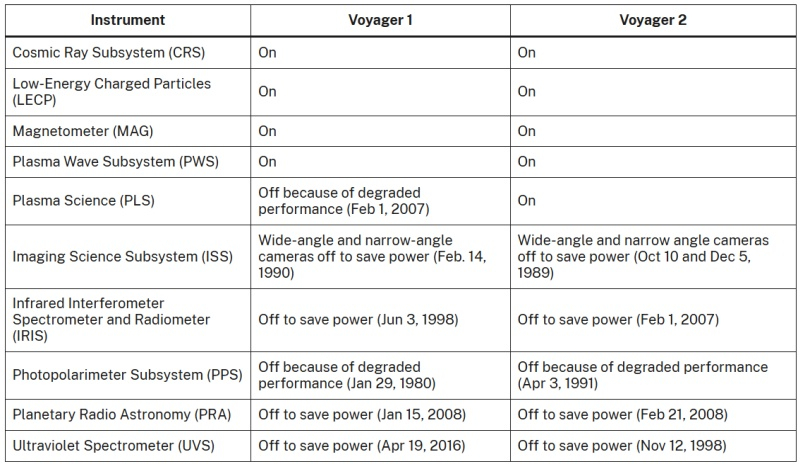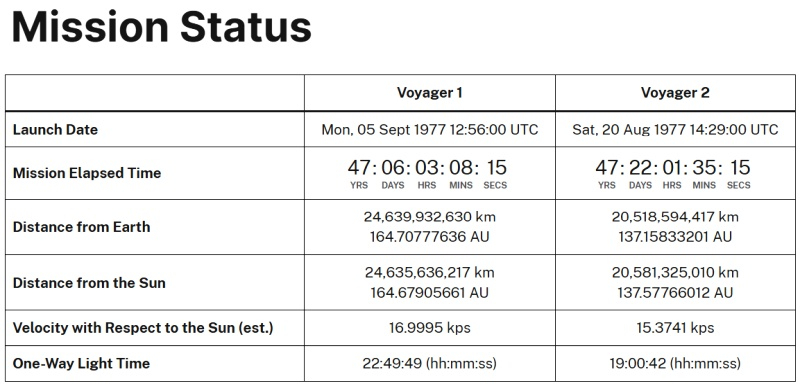The Voyager 1 mission spacecraft regularly fires its engines to keep its antenna pointed at Earth to receive commands and send technical and scientific data. But after 47 years in space, some of the fuel tubes became clogged. Mission engineers successfully corrected the problem and, after careful planning, switched the spacecraft to a different set of engines.

Image source: NASA
Voyager 1 is equipped with three sets of thrusters: two sets of attitude thrusters and one set of trajectory correction thrusters. Because Voyager 1 follows a constant path out of the solar system, any bank of thrusters can be used to adjust the spacecraft’s attitude.
The probe’s motors use liquefied hydrazine, which, when reacted with a catalyst, turns into a gaseous form and is released in short pulses lasting tens of milliseconds. To keep the spacecraft’s antenna pointing toward Earth, the engines need to produce up to 40 such pulses per day.

Main research instruments of the Voyager probes
Over 47 years in space, the tubes that funnel hydrazine into the catalyst beds gradually become clogged with silica, a byproduct created over time by the interaction of fuel and rubber seals in the fuel tank. Clogging reduces the efficiency of engines and the thrust they produce.
Earlier in 2002, the mission engineering team based at NASA’s Jet Propulsion Laboratory in Southern California noticed that some of the fuel tubes in the attitude thruster group used for guidance were clogged, so the team switched to a second group. When this branch showed signs of clogging in 2018, the team switched to trajectory correction motors and has used this group ever since.
Now the tubes of the trajectory correction engines were even more clogged than the tubes of the other two groups. Where the tube opening originally had a diameter of 0.25 mm, the blockage reduced it to 0.035 mm (about half the thickness of a human hair). As a result, the team had to switch back to one of the attitude control engines.
Switching to a different engine group was a relatively simple operation in 1980 or even 2002. But the age of the spacecraft brought new problems, primarily related to power supply and temperature. The fact is that all optional on-board systems, including some heaters, are turned off to reduce the consumption of electricity generated by the plutonium reactor.
The temperature of the disabled engine groups was so low that turning them on could cause irreparable damage. It was necessary to warm up the engines before switching, which required turning off other consumers. Turning off one of the still working scientific instruments could make it impossible to turn it back on.

Status of the main systems of the Voyager probes as of March 2024
After additional study and planning, engineers concluded that it was safe to turn off one of the spacecraft’s main heaters for up to an hour, freeing up enough energy to turn on the engine heaters. It worked – the switching of engine groups was successful and Voyager 1 was again able to adjust its position relative to the Earth.
The Voyager spacecraft explore interstellar space beyond the solar system. Mission scientists and engineers are making every effort to extend the life of the probes as much as possible, but this is becoming increasingly difficult to do. “All the decisions we have to make in the future will require much more analysis and caution than ever before,” said Voyager project manager Suzanne Dodd.

Voyager mission status as of September 11, 2024